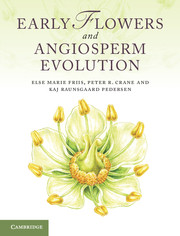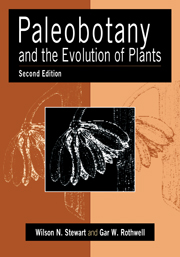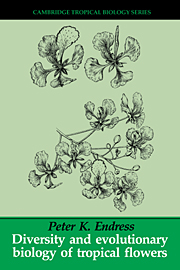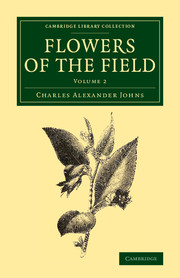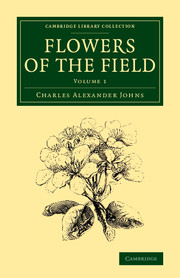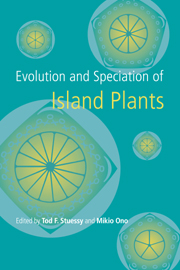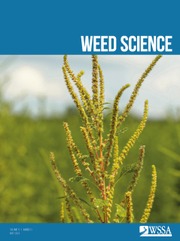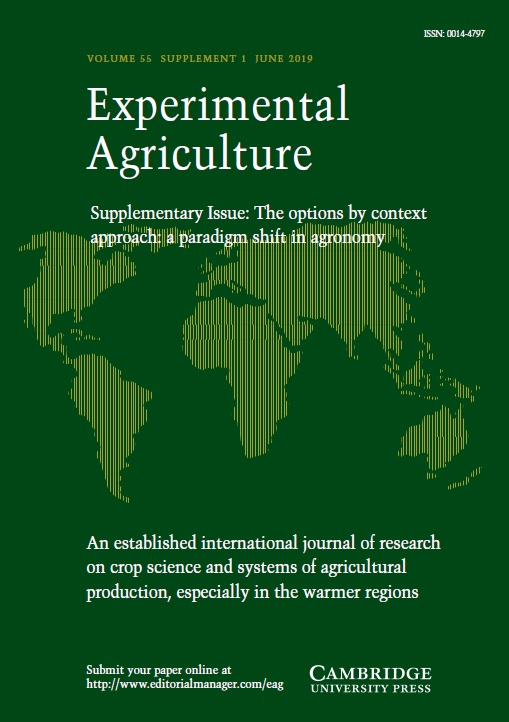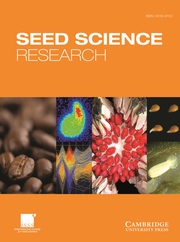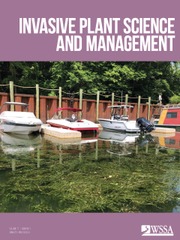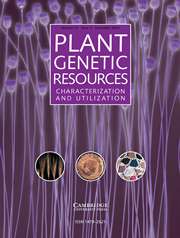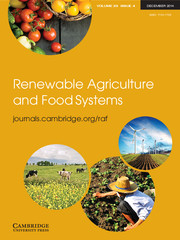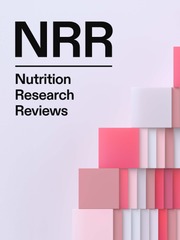Early Flowers and Angiosperm Evolution
- Authors:
- Else Marie Friis, Swedish Museum of Natural History
- Peter R. Crane, Yale University, Connecticut
- Kaj Raunsgaard Pedersen, Aarhus Universitet, Denmark
- Date Published: September 2011
- availability: Available
- format: Hardback
- isbn: 9780521592833
Hardback
Other available formats:
eBook
Looking for an examination copy?
This title is not currently available for examination. However, if you are interested in the title for your course we can consider offering an examination copy. To register your interest please contact [email protected] providing details of the course you are teaching.
-
The recent discovery of diverse fossil flowers and floral organs in Cretaceous strata has revealed astonishing details about the structural and systematic diversity of early angiosperms. Exploring the rich fossil record that has accumulated over the last three decades, this is a unique study of the evolutionary history of flowering plants from their earliest phases in obscurity to their dominance in modern vegetation. The discussion provides comprehensive biological and geological background information, before moving on to summarise the fossil record in detail. Including previously unpublished results based on research into Early and Late Cretaceous fossil floras from Europe and North America, the authors draw on direct palaeontological evidence of the pattern of angiosperm evolution through time. Synthesising palaeobotanical data with information from living plants, this unique book explores the latest research in the field, highlighting connections with phylogenetic systematics, structure and the biology of extant angiosperms.
Read more- The first comprehensive and critical summary of Cretaceous angiosperm floral structures in a phylogenetic framework
- Provides direct historical evidence of the pattern of angiosperm evolution, enabling both geology and biology students to develop a deeper understanding of angiosperm diversity
- Beautifully illustrated in full colour, and featuring a great deal of new and unique data
Reviews & endorsements
"This book presents a comprehensive and detailed examination of the origin and diversification of the flowering plants (angiosperms) based on their rich Cretaceous fossil record. The text is richly complemented by photographs and illustrations of the fossils. These chapters present information on all types of available fossil evidence, but the bulk of the Cretaceous angiosperm record, and the great strength of this book, is the compilation of information on the abundant and diverse “mesofossils” (small fossil flowers, fruits, and seeds) that have been described by Friis, Crane, and Pederson (and several other authors) over the past 30 years or so. This book will be very useful as a textbook for university courses. It may also be of interest to the dedicated amateur botanist or paleontologist, and it will be an essential reference for researchers working in angiosperm systematics and evolution."
Patrick S. Herendeen, Chicago Botanic GardenSee more reviews"The richly illustrated book gives a family-by-family synopsis of current knowledge and the existing literature. The book is a valuable resource for professionals and students interested in up-to-date information on the topic. Highly recommended.:"
M.S. Zavada, Choice magazine"This book is a triumph of the combination of detail, experience and intellect. It answers many questions and asks many more. We are a long way from a full understanding of the origin and early evolution of angiosperms, but thanks to this book we now know, much more precisely than ever before, what questions we should ask and where the gaps in knowledge are. This is a great legacy from all three authors, but I am optimistic they all have much more to offer in the future."
Bob Hill, University of Adelaide, South Australia"This long-awaited book represents not only a remarkable tour de force of palaeobotanical literature, but also a potentially enduring biological textbook. Part of its appeal lies in the excellence of its production. Numerous black-and-white line drawings of flowers and pollen grains of both fossil and extant plants, beautifully executed by Polyanna von Knorring, add considerably to its informative content and high visual impact."
Paula J. Rudall, Botanical Journal of the Linnean Society"this book makes a significant contribution to understanding flowering plant history by assembling (in a single volume) an up-to-date illustrated summary of fossil evidence that establishes a pattern in the appearances of angiosperm taxa through geologic time. This volume will therefore serve as a valuable platform and reference in the continuing evolution of our understanding of angiosperm history. Also of great value is the comprehensive treatment of extant and extinct nonangiospermous seed plants that have been variously implicated in the quest to determine angiosperm ancestry. This treatment sets the stage for future investigations aimed at shedding light on the still elusive question of angiosperm origin. Hence, this is a useful book, one of considerable instructive value, and one that represents an impressive effort by its authors."
William L. Crepet, The Quarterly Review of Biology"how do you write a definitive book for the 21st Century? Early Flowers and Angiosperm Evolution provides a blueprint... It stands as a superbly annotated index of the data behind our current understanding of early angiosperm evolution... This is among the most beautiful scholarly books I’ve seen in a long time. Outcrop pictures are clearly rendered in color, and maps and some diagrams include a touch of hue to enhance interpretation...It is detailed, accessible and offers a synthetic perspective from a team that has been thinking deeply about this topic for decades. And I hope this isn’t the last word. But the thing I love best about paleontology is that one fossil can rewrite everything we thought that we knew. Then we’ll be ready for the next definitive book."
Nan Arens, Evolution – This View of Life: PaleontologyCustomer reviews
Not yet reviewed
Be the first to review
Review was not posted due to profanity
×Product details
- Date Published: September 2011
- format: Hardback
- isbn: 9780521592833
- length: 596 pages
- dimensions: 252 x 195 x 31 mm
- weight: 1.43kg
- contains: 237 b/w illus. 90 colour illus.
- availability: Available
Table of Contents
Preface
1. Introduction to angiosperms
2. The nature of the angiosperm fossil record
3. The environmental context of early angiosperm evolution
4. Stratigraphic framework and key areas for Cretaceous angiosperms
5. Angiosperms in context: extant and fossil seed plants
6. Origin and age of angiosperms
7. Phylogenetic framework and the assignment of fossils to extant groups
8. Fossils near the base of the angiosperm tree
9. Early fossil angiosperms of uncertain relationships
10. Early fossils of eumagnoliids
11. Fossils of monocots
12. Fossils of eudicots: early diverging groups
13. Fossils of core eudicots: basal lineages
14. Fossils of core eudicots: rosids
15. Early fossils of eudicots: asterids
16. Patterns of structural diversification in angiosperm reproductive organs
17. History and evolution of pollination in angiosperms
18. History and evolution of dispersal in angiosperms
19. Vegetational context of early angiosperm diversification
20. The accumulation of angiosperm diversity
References
Index.
Sorry, this resource is locked
Please register or sign in to request access. If you are having problems accessing these resources please email [email protected]
Register Sign in» Proceed
You are now leaving the Cambridge University Press website. Your eBook purchase and download will be completed by our partner www.ebooks.com. Please see the permission section of the www.ebooks.com catalogue page for details of the print & copy limits on our eBooks.
Continue ×Are you sure you want to delete your account?
This cannot be undone.
Thank you for your feedback which will help us improve our service.
If you requested a response, we will make sure to get back to you shortly.
×
